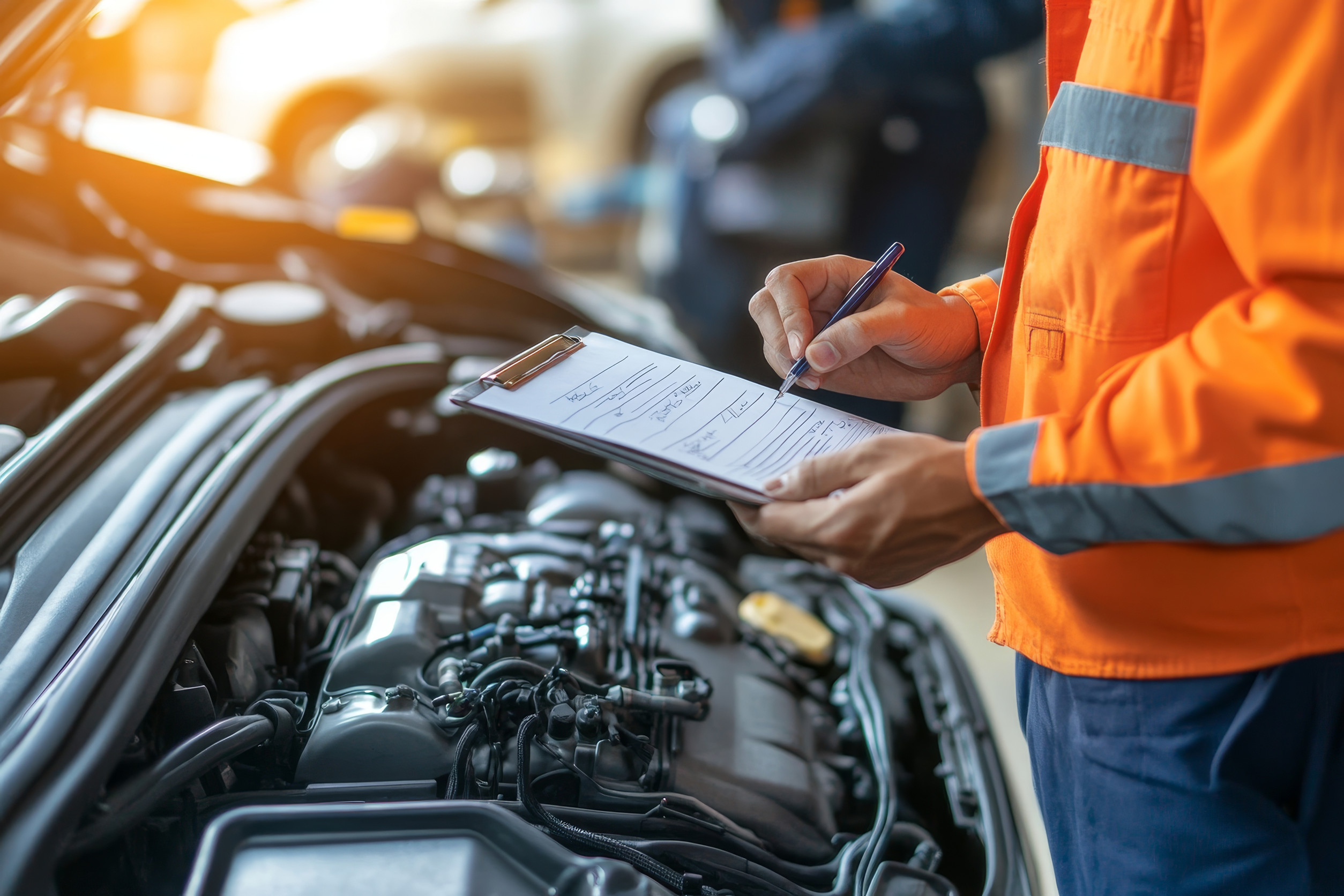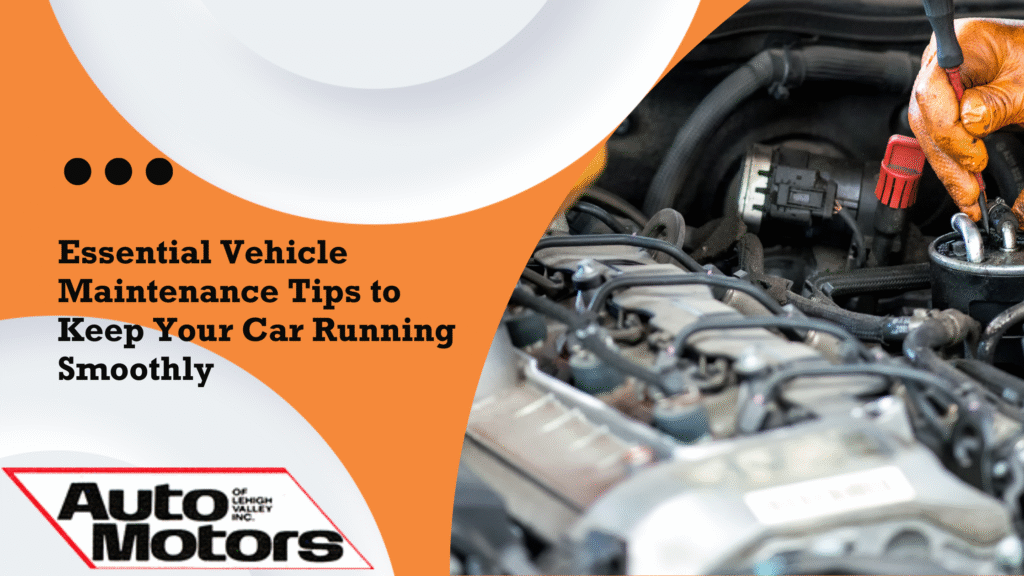Essential Vehicle Maintenance Tips to Keep Your Car Running Smoothly
- Routine maintenance improves performance, safety, and reduces costly repairs.
- Essential tasks include oil changes, brake checks, and seasonal adjustments.
- Professional service ensures expert care, quality parts, and long-term reliability.
Taking care of your car isn’t just about avoiding a breakdown; it’s about enjoying every drive with confidence. When you stay on top of your vehicle’s maintenance, you’ll benefit from better performance, fewer repairs, and a longer lifespan for your investment. Here are some essential vehicle maintenance tips that help you drive smoothly, safely, and with peace of mind.
Why Vehicle Maintenance Matters
Keeping your vehicle in excellent shape goes beyond appearances. Your maintenance efforts directly affect how your car performs, how safe it is, how much you spend in the long run, and even how your vehicle impacts the environment.
Performance Benefits
When your car runs as it should, you experience smoother acceleration, better fuel efficiency, and more responsive handling. Clean engine oil reduces internal friction, fresh air filters allow your engine to breathe, and well-maintained tires help your car grip the road with precision. Every component works together, and staying on top of your maintenance means you won’t be left wondering why your car feels sluggish or unbalanced.
Safety Improvements
Many accidents happen because of neglected vehicle maintenance. Brakes that don’t respond on time, worn tires that lose traction, or lights that fail in poor weather all create dangerous situations.
When you check your vehicle regularly, you reduce the chances of unexpected malfunctions. Knowing that your brakes, tires, and lights are functioning properly allows you to focus on the road ahead.
Cost Savings over Time
It might seem like a hassle to bring your car in for a service, but routine maintenance helps you avoid costly repairs down the line. Small issues like a cracked belt or a dirty transmission filter can quickly snowball into major mechanical failures.
Catching and addressing them early means fewer surprises and lower repair bills. It also keeps your car’s resale value high, since prospective buyers are more likely to trust a car with a documented maintenance history.
Environmental Impact
A well-maintained vehicle emits fewer pollutants. When your engine runs efficiently, it burns fuel more completely, reducing harmful exhaust emissions. Keeping your tires properly inflated improves fuel efficiency, and clean filters help reduce the stress on your engine. Your maintenance habits contribute to cleaner air and a smaller environmental footprint every time you drive.
Regular Maintenance Checklist
Following a consistent maintenance routine helps your car perform at its best year-round. Understanding what to monitor and when to act empowers you to stay ahead of mechanical issues and enjoy a stress-free driving experience.
Oil Changes
Your engine depends on oil to lubricate moving parts and reduce heat. Over time, oil breaks down and collects contaminants, making it less effective. Regular oil changes, usually every 5,000 to 7,500 miles depending on your driving habits and vehicle model, keep your engine healthy. If your oil appears dark or you hear ticking sounds, it might be time for a change sooner. Driving with old oil puts your engine at risk of irreversible damage.
Tire Care
Your tires form your only connection with the road, so they deserve attention. Rotate them every 5,000 to 8,000 miles to ensure even wear, and check the pressure monthly. Underinflated tires reduce fuel economy and affect handling, while overinflated ones wear unevenly and can cause a harsh ride.
Make sure your tread depth is safe by performing the penny test or using a tread gauge. If your car pulls to one side or vibrates excessively, you might also need a wheel alignment or balancing service.
Brake System Inspection
Your brakes are your vehicle’s most critical safety feature. You should listen for squeaking, grinding, or a soft brake pedal; these signs often indicate worn pads or a leak in the brake system.
Even if you don’t notice these symptoms, have your brakes inspected at least once a year. Responsive brakes can make the difference between a close call and a collision, so never delay this essential maintenance.
Battery Health
No one wants to be stuck with a dead battery. Your car battery typically lasts three to five years, but extreme temperatures, short trips, and heavy electrical use can shorten that lifespan. If your headlights dim while idling or your engine struggles to turn over, test your battery’s voltage. Keep the terminals clean and corrosion-free, and consider replacing your battery proactively rather than waiting for it to fail.
Fluid Checks
Your car needs various fluids to operate smoothly, each playing a vital role. Transmission fluid ensures seamless gear changes, brake fluid transfers force into stopping power, coolant keeps your engine from overheating, and power steering fluid helps you steer effortlessly. Check these fluid levels regularly and look for discoloration or strange smells. Top off or flush them as recommended in your vehicle’s manual to prevent performance issues or breakdowns.
Seasonal Maintenance Tips
The seasons bring new driving challenges, and your vehicle needs different care depending on the weather. Preparing for each season ensures you’re not caught off guard by extreme conditions or sudden performance changes.
Winter Prep
Cold temperatures can affect your car’s battery power, tire pressure, and visibility. Before winter arrives, have your battery tested to ensure it holds a strong charge. Install winter tires if you live in a snowy region, and check the pressure frequently as it drops in cold weather.
Replace old wiper blades and fill your washer fluid with a winter-rated formula. Don’t forget to keep an emergency kit in your vehicle with essentials like blankets, a flashlight, and a portable jump starter.
Summer Readiness
Heat can be just as punishing as cold when it comes to vehicle maintenance. In summer, your cooling system works overtime, so check your radiator and coolant levels to prevent overheating. Your tires also expand in the heat, so monitor pressure to avoid blowouts.
Make sure your air conditioning is working efficiently, and inspect belts and hoses for signs of cracking, which are more likely to occur in high temperatures. A little preparation can go a long way in preventing summer breakdowns.
DIY Maintenance vs. Professional Service

While it’s tempting to handle vehicle upkeep yourself, certain aspects of maintenance are best left to trained professionals. The right service provider ensures your car receives the attention it needs to operate at its best.
Knowing Your Limits
You might feel confident checking oil levels or replacing wiper blades, but more complex tasks like brake work, engine diagnostics, or suspension inspections require specialized knowledge. Without the proper tools and training, you risk making mistakes that can compromise your vehicle’s performance or safety.
Professional Expertise
When you choose a professional service, you benefit from technicians who are trained, certified, and experienced in diagnosing and repairing a wide range of issues. They follow manufacturer-recommended procedures and use the right parts, ensuring that your car gets the best possible care. Professionals don’t just fix problems; they prevent them.
Comprehensive Inspections
A professional service goes beyond the obvious. During routine visits, technicians conduct thorough inspections to catch hidden issues before they escalate. From checking belts and hoses to analyzing battery health and scanning onboard systems, they provide a comprehensive overview of your car’s condition.
Long-Term Reliability
By working with experts, you establish a maintenance history that helps protect your vehicle’s value and longevity. Regular service from a trusted provider ensures your car remains dependable, efficient, and safe, day after day, mile after mile.
When to Replace, Not Repair
Sometimes it’s more practical to replace a component rather than repair it. Recognizing the signs can help you make smart decisions and avoid future breakdowns.
Signs It’s Time for a New Battery
If your car cranks slowly, your lights dim when idling, or you’ve had to jump-start frequently, your battery may be on its last leg. Most batteries last three to five years. When in doubt, have it tested to determine whether it’s time for a replacement.
Worn-Out Tires
Bald spots, cracks, or uneven wear patterns are signs that your tires are due for replacement. Even if the tread looks acceptable, age can degrade the rubber. Replacing worn tires boosts your safety, fuel economy, and ride comfort.
Timing Belt Issues
A failed timing belt can cause catastrophic engine damage. If your vehicle manufacturer recommends replacement at a certain mileage, don’t delay. You might not notice symptoms until it’s too late, so it’s best to follow the scheduled interval.
Outdated Spark Plugs
Faulty spark plugs lead to rough idling, misfires, and poor acceleration. Replacing them at the right time improves fuel efficiency and engine performance. If your vehicle feels sluggish or your mileage drops unexpectedly, worn spark plugs could be to blame.
Keeping a Maintenance Log
Staying organized with your vehicle’s maintenance history helps you stay ahead of repairs and track important services. A maintenance log not only reminds you when tasks are due, but it also provides valuable documentation that can boost resale value and ensure warranty compliance.
- Record All Services and Dates: Include oil changes, tire rotations, inspections, and any repairs to keep a clear timeline of your vehicle’s care.
- Track Mileage at Each Service: This helps you stay consistent with manufacturer-recommended intervals and spot trends in wear or fluid use.
- Save Receipts and Invoices: Having proof of professional maintenance can increase buyer confidence and assist with warranty claims.
- Use Digital Apps or a Notebook: Choose whichever method you’ll update consistently—some apps can even send reminders for upcoming services.
- Note Unusual Symptoms or Repairs: Documenting odd noises, performance issues, or recurring problems helps your technician diagnose and fix them more effectively.
Common Maintenance Myths Debunked
Misinformation can cost you time and money when it comes to caring for your vehicle. Clearing up some popular myths helps you make better decisions about your maintenance routine.
You might have heard that you need to change your oil every 3,000 miles. While that used to be true for older cars, modern engines and synthetic oils can go much longer between changes. Always consult your owner’s manual for the most accurate schedule.
Some drivers believe premium gasoline improves performance in any vehicle. However, unless your engine is specifically designed for high-octane fuel, using premium gas offers no benefit and just increases your fuel bill.
Another myth is that you must warm up your car before driving, especially in winter. Modern engines are designed to operate efficiently with minimal idling. In fact, excessive idling can waste fuel and produce more emissions.
Maintenance Tips for Older Vehicles
As your vehicle ages, it requires more attentive care to stay dependable. Older models face increased wear and tear, so maintaining their health ensures longevity and roadworthiness.
- Inspect Belts and Hoses Frequently: These components can crack and dry out with age. Regular inspections help avoid sudden failures.
- Monitor Fluid Consumption: Older engines may burn oil or coolant more quickly. Check levels more frequently and watch for leaks.
- Upgrade to High-Mileage Oils: Specialized formulations offer better protection for worn engine parts and help reduce leaks and oil consumption.
- Address Rust Early: Older vehicles are more susceptible to rust. Wash regularly and treat rust spots before they spread.
- Check Suspension and Steering Components: These parts degrade over time and can affect ride comfort and control. Frequent inspections help catch worn bushings, shocks, or ball joints.
- Test Electrical Systems: Aging alternators, batteries, and wiring can lead to flickering lights or slow starts. Include regular electrical diagnostics in your maintenance routine.
Ready to give your car the attention it deserves? At Auto Motors of Lehigh Valley, we offer trusted maintenance services to keep your vehicle running at its best. Whether you need a routine oil change, brake inspection, or seasonal check-up, we’re here to help. Contact us today and experience professional service that puts your safety and satisfaction first.

